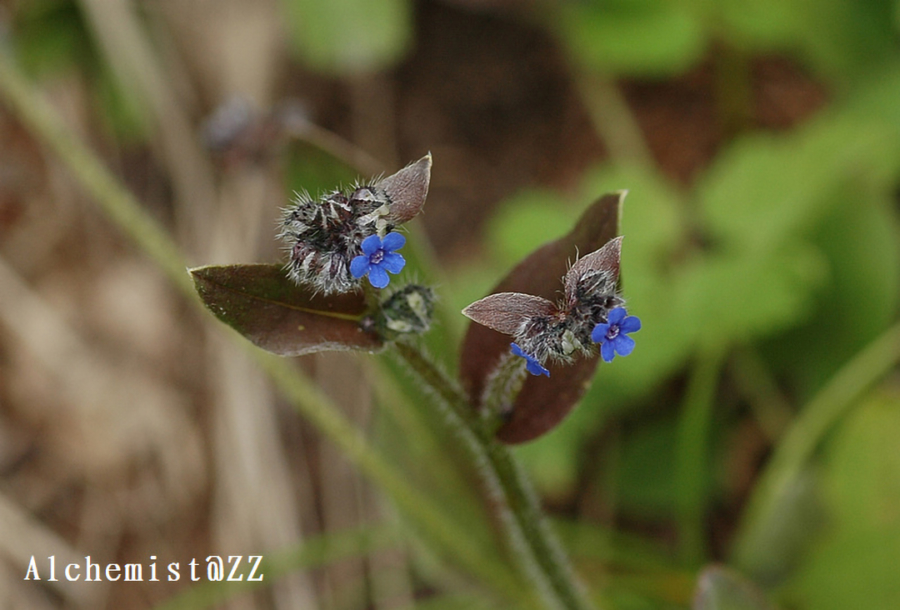- Scientific Name: Microula sikkimensis (C.B.Clarke) Hemsl.
- Ref: Hooker’s Icon. Pl. 26: t. 2563. 1899
- Synonyms: Anchusa sikkimensis C.B.Clarke, Anoplocaryum limprichtii Brand
- Chinese Common Name: 微孔草 wēikǒng∙cǎo
- Family: Boraginaceae
- Genus: Microula
- Distribution: Hillside meadows, thickets, forest margins, river banks, fields; 2900-4500 m. Gansu, Qinghai, SW Shaanxi, W Sichuan, SE Xizang, NW Yunnan [Bhutan, India, Nepal, Sikkim].
- Photo: 07/14/2009, Mt. Taibai, Qinling
Stems erect or ascending, not crowded, frequently branched from base, or not branched, 6-65 cm tall, bristly, sometimes sparsely strigose. Basal and lower stem leaves long petiolate, broadly lanceolate to ovate or narrowly ovate, 4-12 × 0.7-4.4 cm, base rounded to broadly cuneate, apex acute to acuminate, rarely obtuse; upper stem leaves gradually reduced upward, short petiolate to sessile, narrowly ovate to broadly lanceolate, short strigose, abaxially bristly along midvein, adaxially sparsely bristly, hairs discoid at base, base attenuate, margin entire. Inflorescences terminal, crowded, 0.5-1.5 cm wide, sometimes slightly elongated to ca. 2 cm; basal bracts leaflike, other bracts 0.5-2 mm. Pedicel densely short strigose. Calyx ca. 2 mm, to 3.5 mm in fruit, parted nearly to base; lobes linear to narrowly triangular, sparsely pubescent and long hispid outside, margin densely pubescent and short strigose inside. Corolla blue or blue-purple; tube 2.5-3.8 mm, glabrous; appendages low trapeziform or lunate, ca. 0.3 mm, glabrous or short pubescent; limb 5-9(-11) mm wide, glabrous; lobes suborbicular. Nutlets ovoid, ± dorsiventrally compressed, 2-2.5 × ca. 1.8 mm, with fine tubercles and short hairs; aperture in middle and upper parts of abaxial surface, narrowly oblong, 1-1.5 mm; attachment scar at center of adaxial surface. Fl. May-Sep. (Flora of China)
